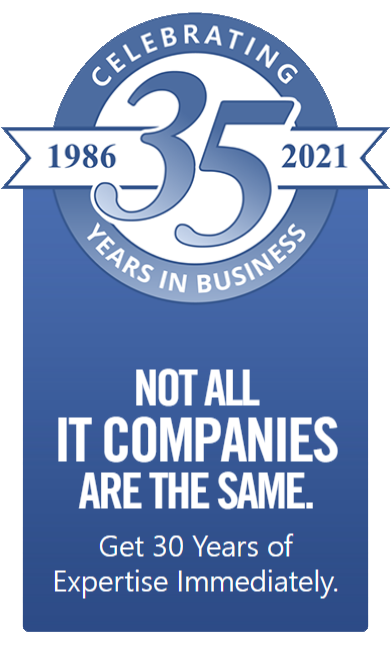There are many different reasons people go into business. While money may not be a main motivation to start, staying in profit is how almost every business operates. A company’s ability to maximize profits is top of mind for many owners, however, when it comes to maximizing IT related functions managers are often at a loss. To help, we have developed a three part article on how technology can help influence the bottom line.
The first part of the article focuses on maximizing the IT resources you already have.
1. Be the outside thinker
The problem with many managers and business owners is that they tend to focus too closely on one or two key business elements. When it comes to technology this often means using only small parts of the technology available, while other parts are underutilized.
Therefore, it’s important that you take a step back every now and then and really look at the tech you currently use. This can be hard to do, especially when you are so invested in a business. It’s a good idea to consult with an advisor like a Managed Service Provider who knows how to get the most out of existing technology.
A lot of times outside help can really pinpoint areas where you can improve efficiency or reduce operating costs. In turn, this helps improve, or at the very least stabilize, your bottom line.
2. Always be looking around
What we mean by this is: Be proactive. Technology and related systems are always changing and advancing. Managers and owners who aren’t aware of the technological changes around them might see lower profits. This doesn’t mean just looking at your physical technology, it pays to look at systems related to the Internet too.
Take for example social media. It’s not going away and has been proven to be an effective marketing tool. The only problem is the service that’s popular today may not be so next year. To get the most out of a system like social media, you need to understand and be aware of it.
If you keep your finger on the pulse, you’ll be more informed about what’s going on, what’s coming up and what to do about it. If you spot something that you think will benefit your company, take the steps to integrate it. The interesting thing about most new technical advancements is that they are focused on making existing systems more efficient.
Don’t just be looking externally either, it pays to look at what tech your employees are using the most and why. If you encourage them to be open and showcase their ideas you’ll be surprised at what they come up with.
It’s being aware of both internal and external trends that can help you identify the next big opportunity to further your bottom line.
3. Facts should determine actions
This can be a tough thing to do, but facing the facts and current situation is incredibly important. If you don’t know where your company is at in terms of what technology is used, then any decisions you make won’t be effective and could end up harming your company. It’s a good idea to conduct an audit of your current systems.
What to audit:
- How many computers you have vs employees.
- What software each employee uses.
- How and what staff use the computers for.
- Level of technical integration of current technology.
- What systems and programs are used most often.
- Operating costs of technology.
There are many different aspects you can look into. You are basically looking to get a picture of where your company currently stands and if there are any systems/processes you could be doing better, or getting rid of. If you find problems you can take steps to fix them, or if you need help, contact us.
Published on 21st December 2012 by Jeanne DeWitt.


